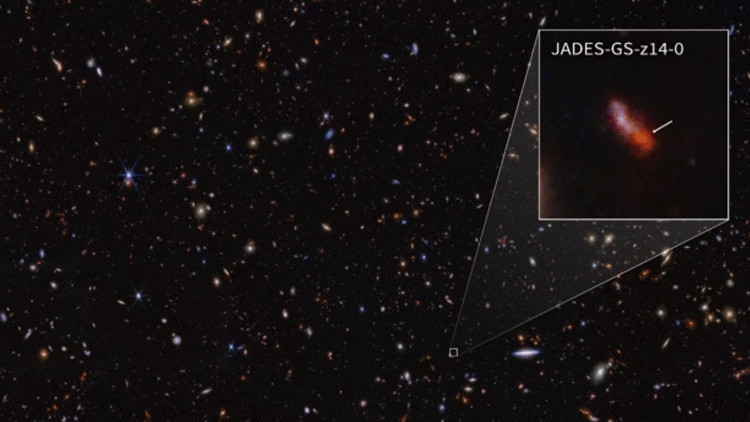Space telescope JWST searches for "dark stars"

NEWS CENTER
Created: October 14, 2025 11:17
NASA 's James Webb Space Telescope (JWST) has captured one of the strongest pieces of evidence yet for "dark stars," which are thought to have existed in the early universe. If confirmed, this discovery could clarify both the mysteries of dark matter and the origin of supermassive black holes in the universe.
DARK BUT SHINING STARS
While the term "dark star" may sound contradictory, these stars emit light and energy. Unlike ordinary stars, they shine not through nuclear fusion, but through the interactions of dark matter.
Astrophysicist Cosmin Ilie of Colgate University in the US describes these structures as follows: "Supermassive dark stars are giant, luminous but loose clouds of hydrogen and helium. They are stabilized by the tiny amount of self-destructing dark matter they contain."
FOUR CANDIDATES THROUGH JWST'S PERSPECTIVE
The researchers searched for the possibility of dark stars in the four most distant objects observed by JWST. All objects were consistent with this explanation. The most striking finding was a single ionized helium absorption signature detected at a wavelength of 1,640 Angstroms. This signature is theoretically considered the "signature" of dark stars. "Although the signal is weak, this feature has been observed for the first time. That in itself is remarkable," Ilie said.
THE FIRST GALAXIES OF THE UNIVERSE
Shortly after JWST launched in 2021, massive galaxies were discovered that appeared to have formed very shortly after the universe's birth. However, their growth to such a size in such a short time could not be explained by existing physics models.
The new hypothesis suggests that these might not actually be galaxies, but dark stars. These stars can reach masses of up to a million solar masses and appear to resemble galaxies from a distance.
Of the four candidates in the study, one is a point source of light, while the other three are slightly diffuse, suggesting they could be dark stars surrounded by clouds of ionized hydrogen and helium.
DARK MATTER AND THE MYSTERY OF THE BLACK HOLE
According to the researchers, this discovery may not only shed light on the nature of dark matter. The collapse of dark stars could also provide clues as to how the supermassive black holes seen in the early universe formed so quickly. While black holes formed from normal stars take billions of years to reach this mass, the collapse of dark stars could shorten this process—acting like the universe's black hole "accelerator."
A NEW ERA AT THE FRAMEWORK OF SCIENCE
While not yet definitive proof, this discovery has already generated excitement in the physics world. The research team plans to further define the nature of these four candidates with future observations from JWST. If dark stars do exist, this could revolutionize our understanding of both the universe's earliest light sources and the behavior of dark matter.
hurriyet





